Analysis of Motion Characteristics of Bionic Morphing Wing Based on Sarrus Linkages
Abstract
:1. Introduction
2. Materials and Methods
2.1. A Bionic Morphing Wing Based on Sarrus Linkages
2.2. Bionic Morphing Wing Kinematic Model
2.3. Virtual Prototype Folding and Unfolding Motion Simulation
- (1)
- The purpose of this simulation and experiment is to verify the feasibility of the folding scheme, so the resistance on the wing during the movement was not considered.
- (2)
- The role of skin is to form the whole wing and provide lift in the process of movement. In order to verify the kinematic characteristics, simulation verification was carried out in static condition in this paper, and the skin weight is light, so the skin structure was removed in the simulation model.
- (3)
- Without considering the elastic deformation of the component, it was regarded as a rigid body.
- (4)
- The frictional resistance between the hinges was ignored.
- (5)
- The virtual prototype model finally established is shown in Figure 8.
2.4. Prototype Folding and Unfolding Experiment
3. Results
3.1. Simulation Motion Analysis and Optimization Design of Morphing Wing
3.2. Folding and Unfolding Experimental Analysis of Morphing Wing
4. Conclusions
Author Contributions
Funding
Institutional Review Board Statement
Informed Consent Statement
Data Availability Statement
Conflicts of Interest
References
- Zhong, Y.; Meng, W.; Zi, L.; Long, C. Design and plunge-diving analysis of underwater-aerial transmedia vehicle of the bionic Kingfisher. J. Zhejiang Univ. (Eng. Sci.) 2020, 54, 407–415. [Google Scholar]
- Barbarino, S.; Bilgen, O.; Ajaj, R.M.; Friswell, M.I.; Inman, D.J. A Review of Morphing Aircraft. J. Intell. Mater. Syst. Struct. 2011, 22, 823–877. [Google Scholar] [CrossRef]
- Pendleton, E.W.; Bessette, D.; Field, P.B.; Miller, G.D.; Griffin, K.E. Active Aeroelastic Wing Flight Research Program: Technical Program and Model Analytical Development. J. Aircr. 2000, 37, 554–561. [Google Scholar] [CrossRef]
- Gern, F.H.; Inman, D.J.; Kapania, R.K. Computation of Actuation Power Requirements for Smart Wings with Morphing Airfoils. AIAA J. 2005, 43, 2481–2486. [Google Scholar] [CrossRef]
- Bae, J.-S.; Seigler, T.M.; Inman, D.J. Aerodynamic and Static Aeroelastic Characteristics of a Variable-Span Morphing Wing. J. Aircr. 2005, 42, 528–534. [Google Scholar] [CrossRef]
- Samuel, J.B.; Pines, D. Design and Testing of a Pneumatic Telescopic Wing for Unmanned Aerial Vehicles. J. Aircr. 2007, 44, 1088–1099. [Google Scholar] [CrossRef]
- Chakravarthy, A.; Grant, D.T.; Lind, R. Time-Varying Dynamics of a Micro Air Vehicle with Variable-Sweep Morphing. J. Guid. Control. Dyn. 2012, 35, 890–903. [Google Scholar] [CrossRef]
- Joo, J.J.; Reich, G.W.; Westfall, J.T. Flexible Skin Development for Morphing Aircraft Applications via Topology Optimization. J. Intell. Mater. Syst. Struct. 2009, 20, 1969–1985. [Google Scholar] [CrossRef]
- Lindner, D.K.; Bharti, S.; Frecker, M.; Lesieutre, G.; Browne, J. Tendon actuated cellular mechanisms for morphing aircraft wing. In Proceedings of the Modeling, Signal Processing, and Control for Smart Structures, San Diego, CA, USA, 19–21 March 2007. [Google Scholar] [CrossRef]
- Wang, C.; Ning, Y.; Chen, L.; Wang, X. Design and Mechanical Analysis of Bionic Foldable Beetle Wings. Appl. Bionics Biomech. 2018, 2018, 1308465. [Google Scholar] [CrossRef] [PubMed]
- Zhang, Z.; Sun, X.; Du, P.; Sun, J.; Wu, Y. Design of a hydraulically-driven bionic folding wing. J. Mech. Behav. Biomed. Mater. 2018, 82, 120–125. [Google Scholar] [CrossRef] [PubMed]
- Ryu, S.W.; Lee, J.G.; Kim, H.J. Design, Fabrication, and Analysis of Flapping and Folding Wing Mechanism for a Robotic Bird. J. Bionic Eng. 2020, 17, 229–240. [Google Scholar] [CrossRef]
- Truong, Q.-T.; Argyoganendro, B.W.; Park, H.C. Design and demonstration of insect mimicking foldable artificial wing using four-bar linkage systems. J. Bionic Eng. 2014, 11, 449–458. [Google Scholar] [CrossRef]
- Bartley-Cho, J.D.; Wang, D.P.; Martin, C.A.; Kudva, J.N.; West, M.N. Development of High-rate, Adaptive Trailing Edge Control Surface for the Smart Wing Phase 2 Wind Tunnel Model. J. Intell. Mater. Syst. Struct. 2016, 15, 279–291. [Google Scholar] [CrossRef]
- Wang, Q.; Chen, Y.; Tang, H. Mechanism Design for Aircraft Morphing Wing. In Proceedings of the 53rd AIAA/ASME/ASCE/AHS/ASC Structures, Structural Dynamics and Materials Conference 20th AIAA/ASME/AHS Adaptive Structures Conference 14th AIAA, Honolulu, Hawaii, 23–26 April 2012. [Google Scholar] [CrossRef]
- Gao, B.; Kang, R.; Chen, Y. Deployable Mechanism Design for Span Morphing Wing Aircraft. In Mechanism and Machine Science; Lecture Notes in Electrical Engineering: Berlin/Heidelberg, Germany, 2017; pp. 801–813. [Google Scholar] [CrossRef]
- Gomez, J.C.; Garcia, E. Morphing unmanned aerial vehicles. Smart Mater. Struct. 2011, 20, 103001. [Google Scholar] [CrossRef]
- Xiu, H.; Wang, K.; Wei, G.; Ren, L.; Dai, J.S. A Sarrus-like overconstrained eight-bar linkage and its associated Fulleroid-like platonic deployable mechanisms. Proc. Inst. Mech. Eng. Part C J. Mech. Eng. Sci. 2018, 234, 241–262. [Google Scholar] [CrossRef] [Green Version]
- Liu, R.; Yao, Y.-A.; Li, Y. Design and analysis of a deployable tetrahedron-based mobile robot constructed by Sarrus linkages. Mech. Mach. Theory 2020, 152, 103964. [Google Scholar] [CrossRef]
- Kenneally, G.D.; Rodrigues, L. Biologically inspired telescoping active suspension arm vehicle: Preliminary results. In Proceedings of the 2010 IEEE/ASME International Conference on Advanced Intelligent Mechatronics, Montreal, QC, Canada, 6–9 July 2010; pp. 1380–1384. [Google Scholar] [CrossRef]
- Wu, J.; Yang, H.; Li, R.; Ruan, Q.; Yan, S.; Yao, Y.-A. Design and analysis of a novel octopod platform with a reconfigurable trunk. Mech. Mach. Theory 2021, 156, 104134. [Google Scholar] [CrossRef]
- Lu, Y.; Ye, N.; Ding, L. Type synthesis of spatial 3-DoF parallel mechanisms with planar sub-chains using revised digital topological graphs and arrays. Robotica 2015, 35, 370–383. [Google Scholar] [CrossRef] [Green Version]

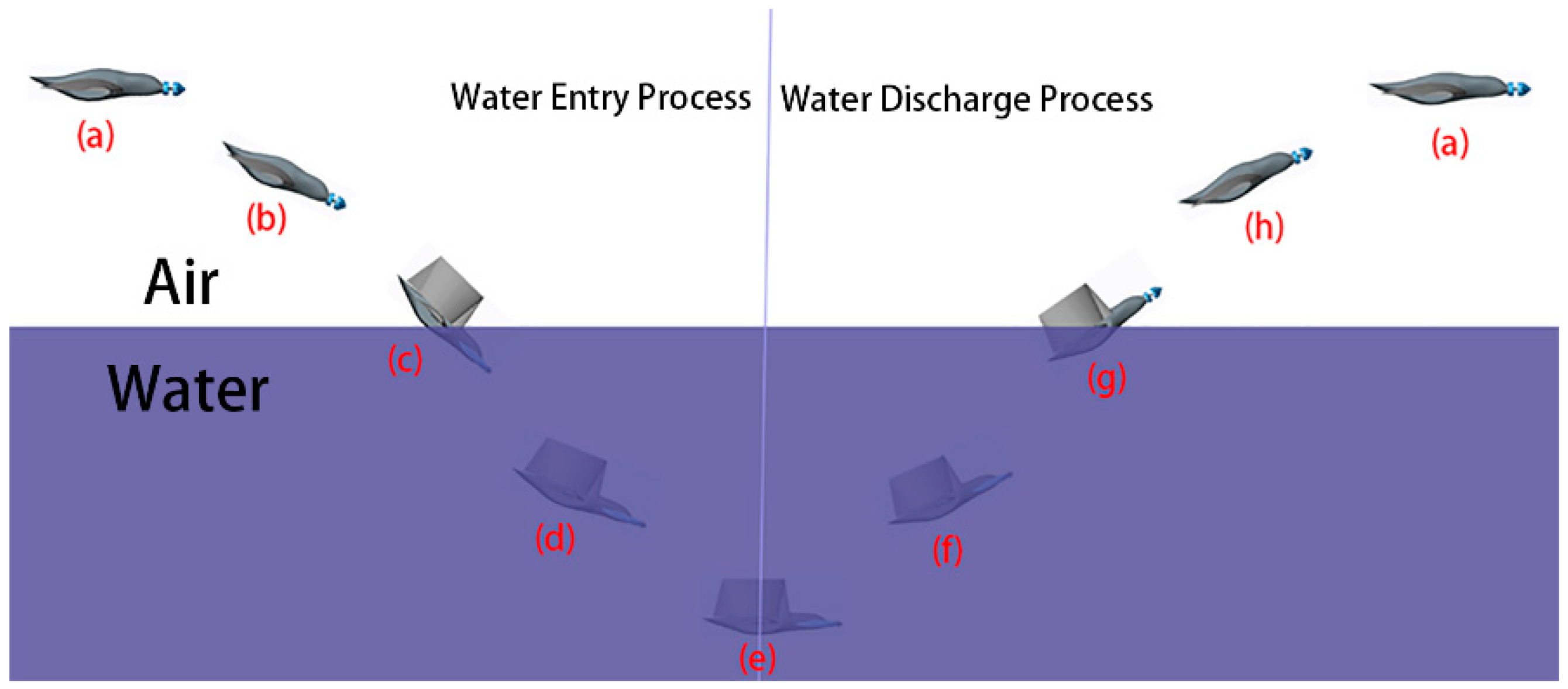
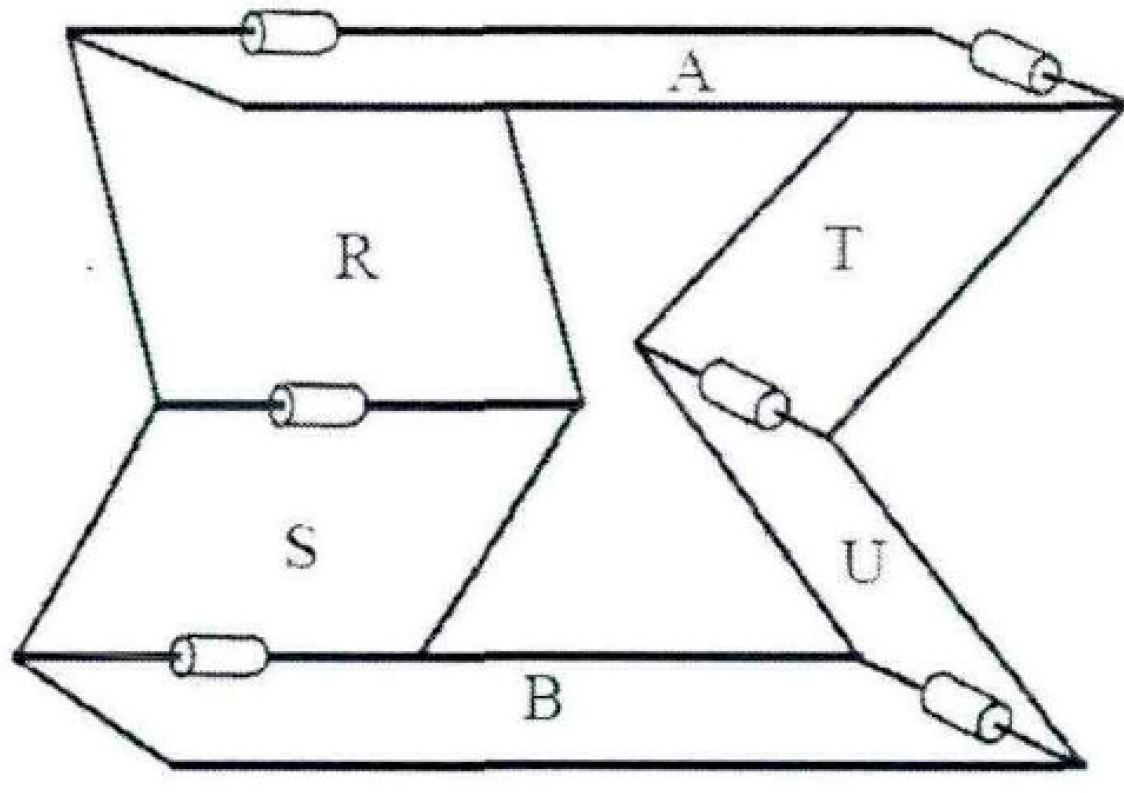
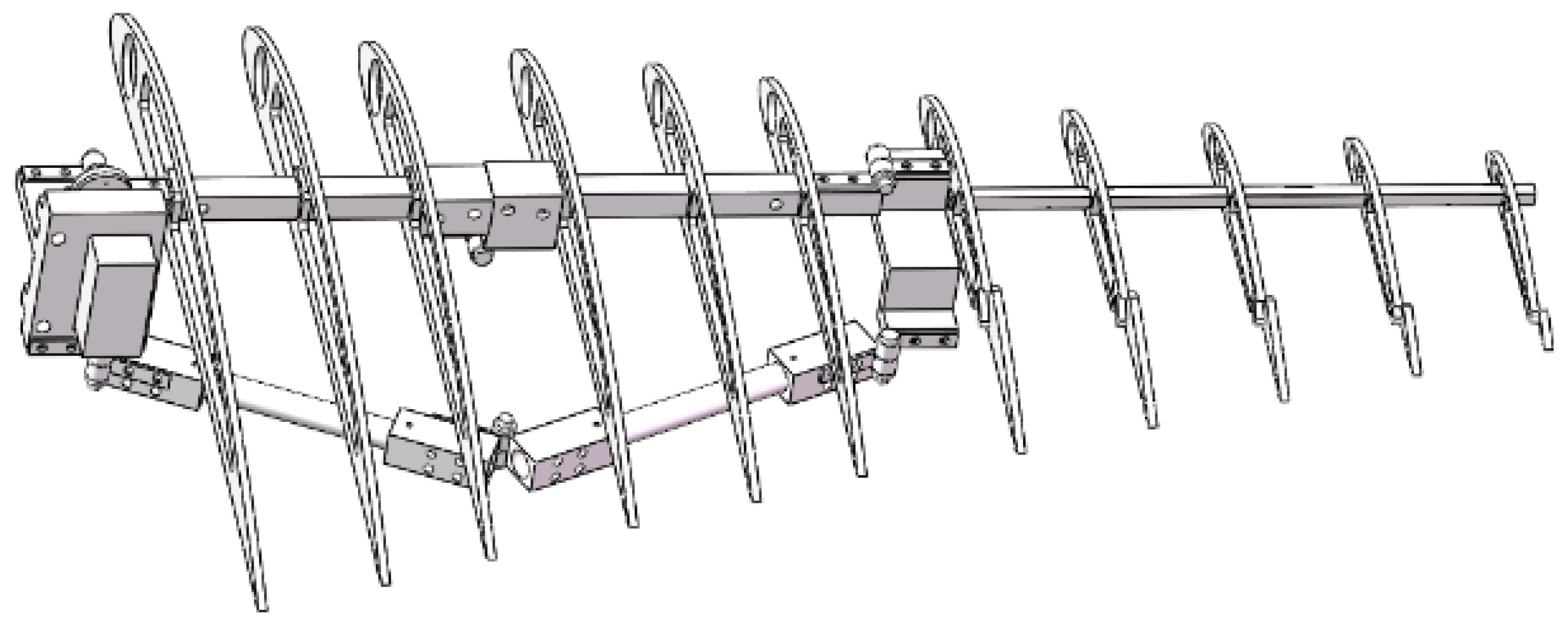



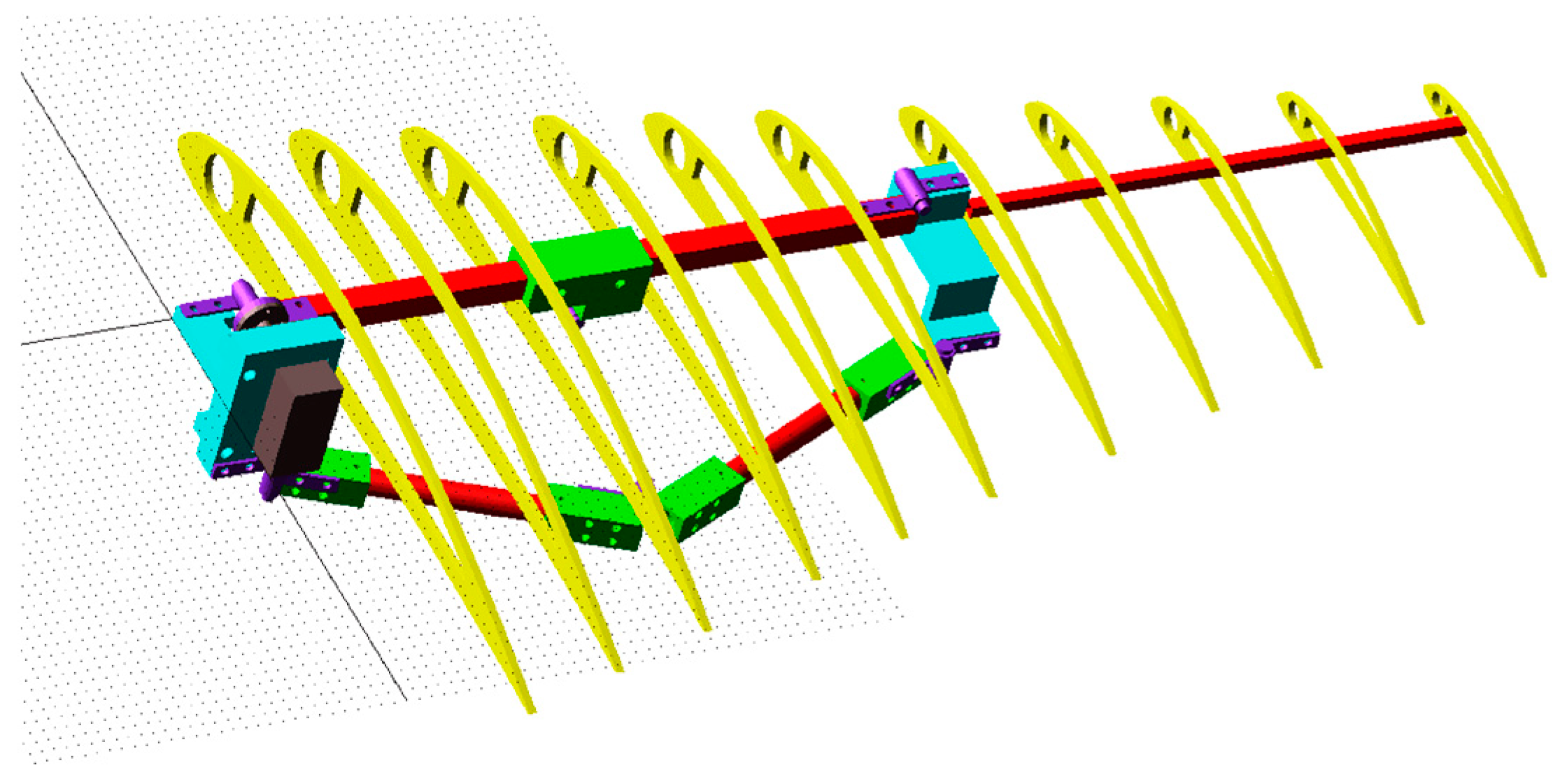


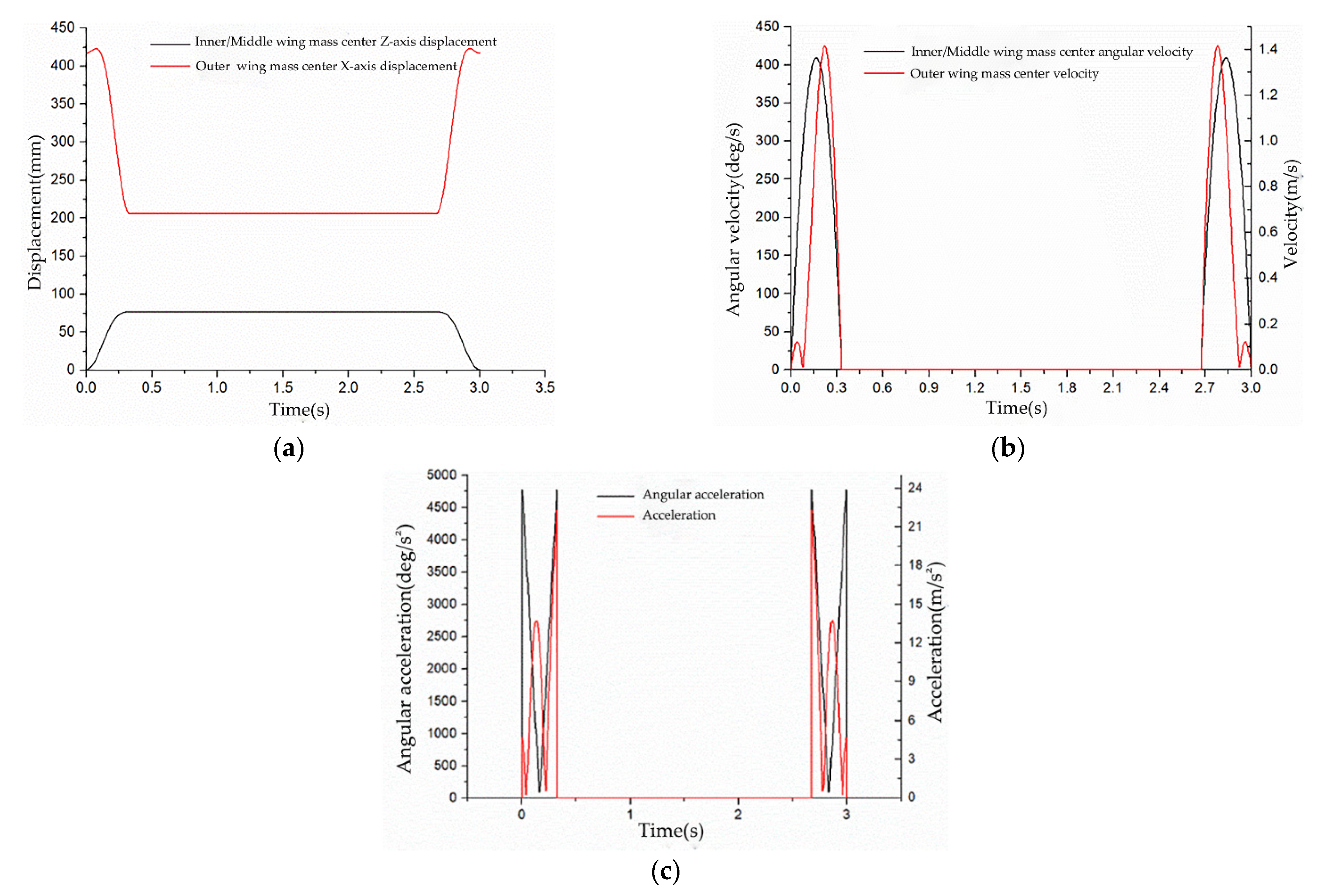


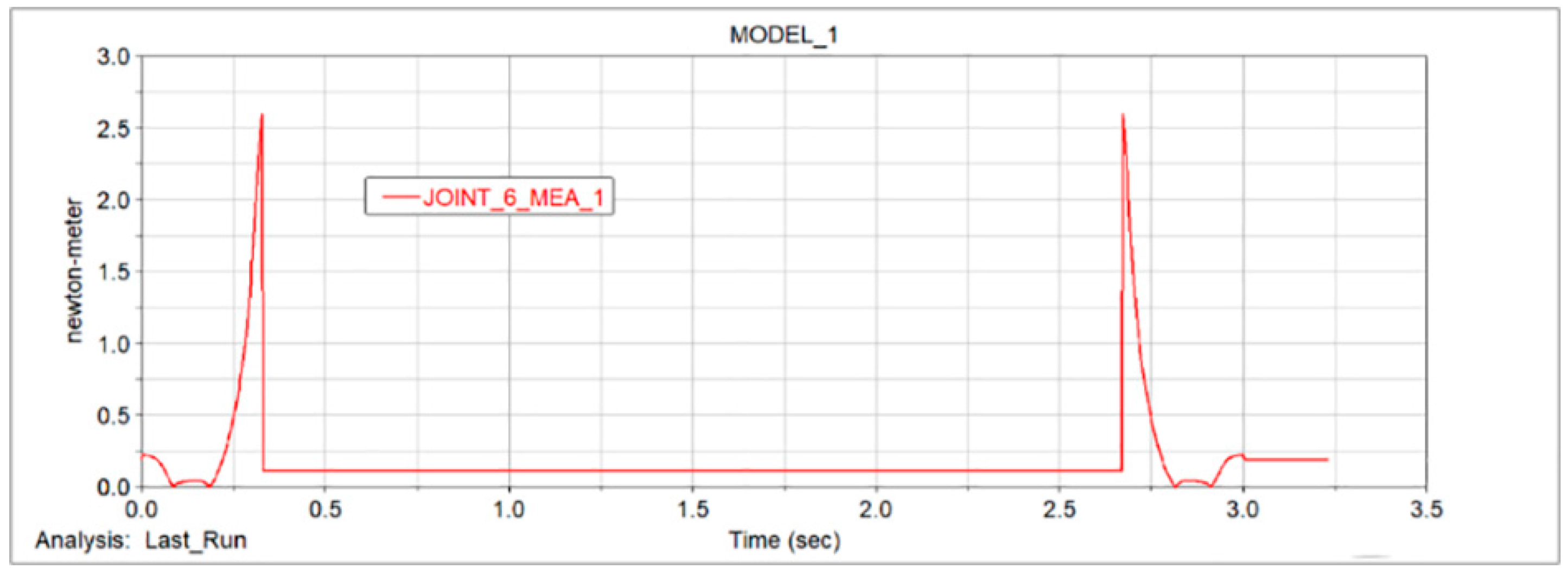
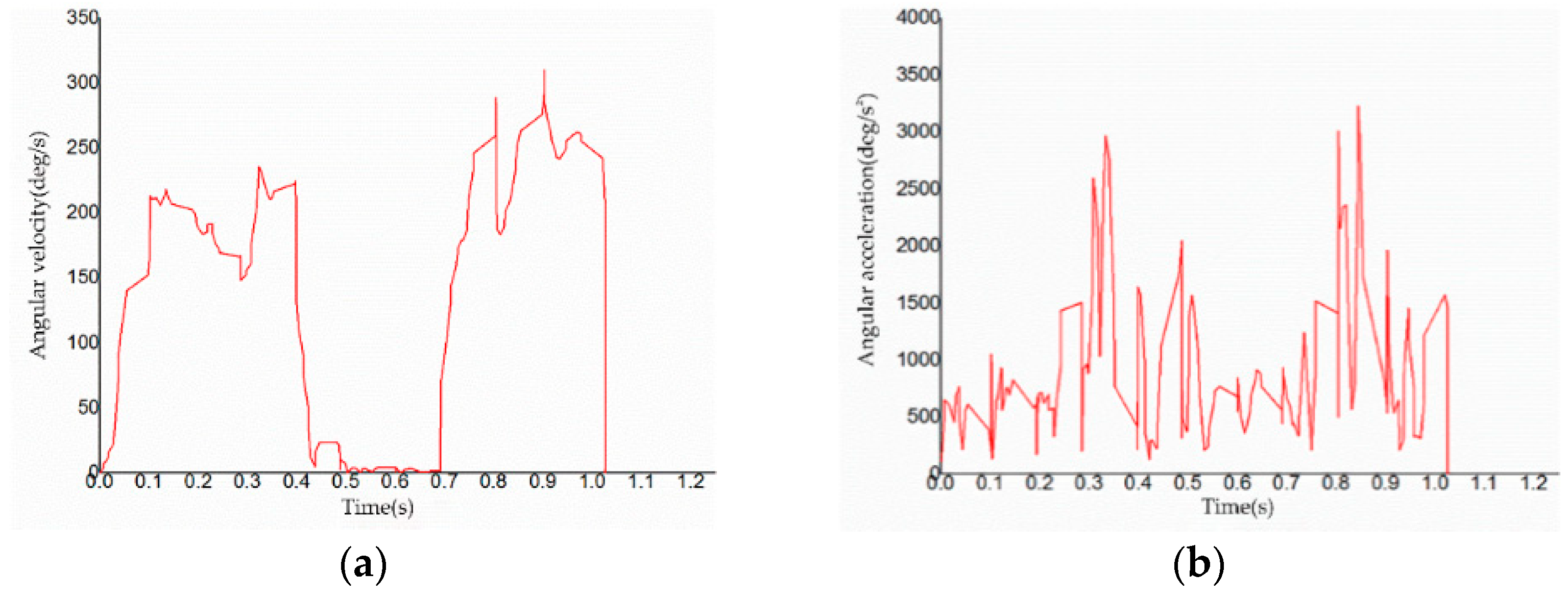
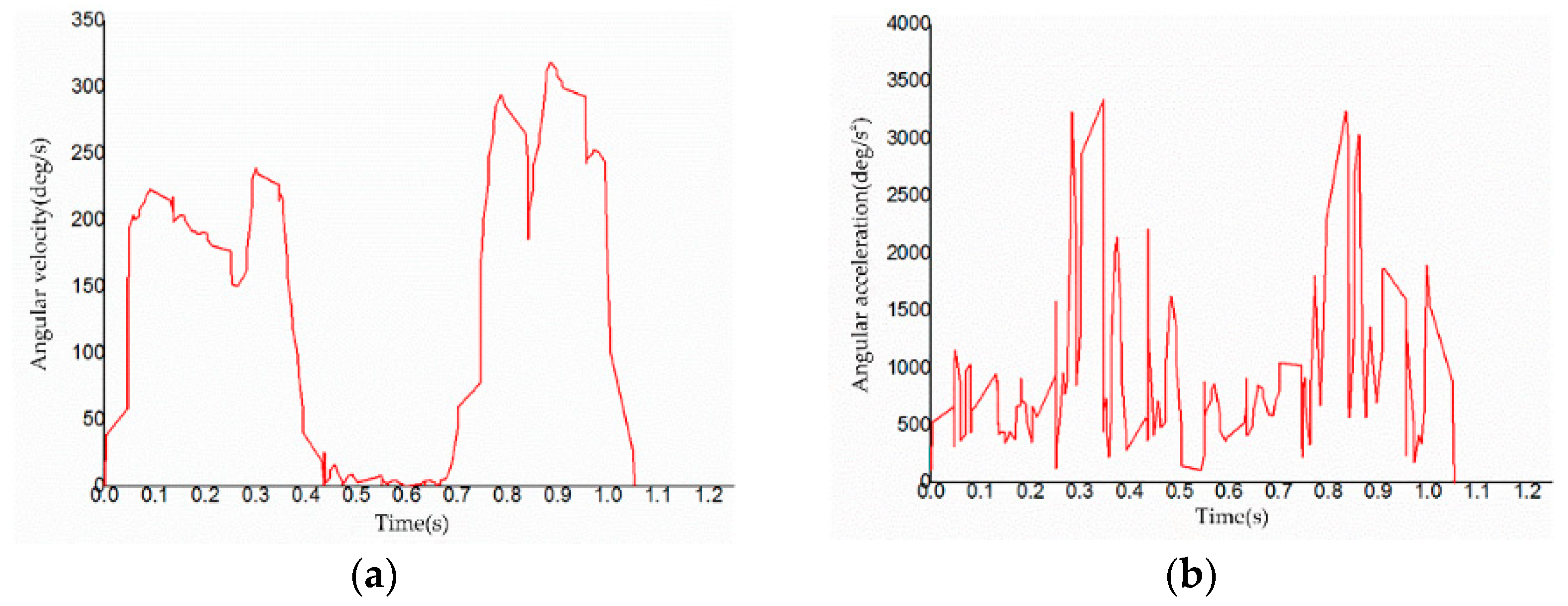
| Component | Inner Wing | Middle Wing | Outer Wing | Rod 1 | Rod 2 |
|---|---|---|---|---|---|
| Length/mm | 150 | 150 | 200 | 170 | 180 |
| Size | Weight | Velocity | Torque |
|---|---|---|---|
| 40.4 × 19.8 × 36.0 | 48 g | 0.22 s/60° (4.8 V) 0.18 s/60° (6.0 V) | 3.9 kg/cm (4.8 V) 5.2 kg/cm (6.0 V) |
| Part Name | Inner/Middle Wing | Outer Wing | Rod 1 | Rod 2 | Hinges | Related Connectors |
|---|---|---|---|---|---|---|
| Length/mm | 124 | 200 | 140 | 142 | / | / |
| Material | Square carbon tube | Square carbon tube | Round carbon tube | Round carbon tube | PLA | Nylon |
| JOINT_6_MEA_1 (N·m) | DV_1 (mm) | DV_2 (mm) | |
|---|---|---|---|
| Initial Value | 1.5247 | 155 | 45 |
| Optimization value | 1.2085 | 157.21 | 44.97 |
| Time/s | 0 | 0.4378 | 0.6915 | 1.027 |
|---|---|---|---|---|
| Folding angle/° | −1.1755 | 86.1909 | 86.2036 | −1.1646 |
| Time/s | 0 | 0.431 | 0.7005 | 1.054 |
|---|---|---|---|---|
| Folding angle/° | −1.593 | 86.3228 | 86.1759 | −1.3458 |
Publisher’s Note: MDPI stays neutral with regard to jurisdictional claims in published maps and institutional affiliations. |
© 2022 by the authors. Licensee MDPI, Basel, Switzerland. This article is an open access article distributed under the terms and conditions of the Creative Commons Attribution (CC BY) license (https://creativecommons.org/licenses/by/4.0/).
Share and Cite
Yun, Z.; Feng, Y.; Tang, X.; Chen, L. Analysis of Motion Characteristics of Bionic Morphing Wing Based on Sarrus Linkages. Appl. Sci. 2022, 12, 6023. https://doi.org/10.3390/app12126023
Yun Z, Feng Y, Tang X, Chen L. Analysis of Motion Characteristics of Bionic Morphing Wing Based on Sarrus Linkages. Applied Sciences. 2022; 12(12):6023. https://doi.org/10.3390/app12126023
Chicago/Turabian StyleYun, Zhong, Yunhao Feng, Xiaoyan Tang, and Long Chen. 2022. "Analysis of Motion Characteristics of Bionic Morphing Wing Based on Sarrus Linkages" Applied Sciences 12, no. 12: 6023. https://doi.org/10.3390/app12126023






